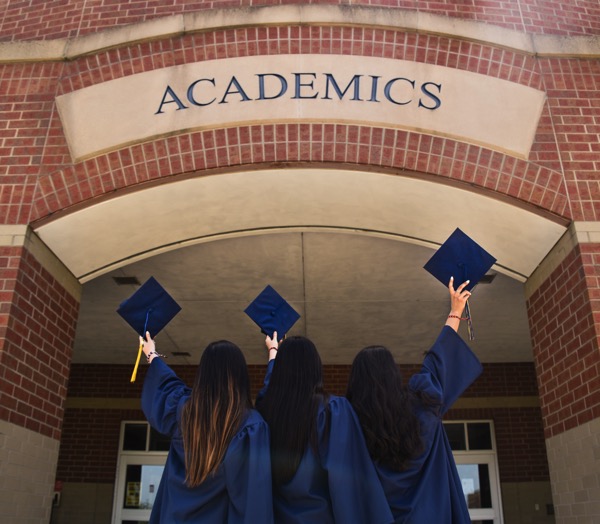One of the biggest problems with attending a college or university is figuring out how to pay for it. California found a way to help with that. It starts with a bill called AB 132. The title of this bill is “Postsecondary education trailer bill”, and it amends an existing educational law.
On July 15, 2021, AB 132 passed the California Senate floor with a vote of 32 AYES to 4 NOES (and 4 Senators not voting). The California Assembly passed AB 132 with 63 AYES to 9 NOES (and 7 Assembly Members not voting. Governor Gavin Newsom (Democrat) signed AB 132 into law on July 27, 2021.
What does the amended “Postsecondary education trailer bill” provide?
According to a news release on Governor Gavin Newsom’s official website, AB 132 “implements expansion of Cal Grant program, improvements to Middle Class Scholarship program and dual admissions pathway to UC or CSU for eligible community college students.” From the news release:
Governor Gavin Newsom today signed the higher education budget trailer bill implementing significant California Comeback Plan investments in college affordability and access – including expanded student financial aid, education and training grants for workers displaced by the pandemic, transfer pathways for community college students and college savings accounts for low-income and underrepresented public school students.
The Governor’s California Comeback Plan provides an unprecedented level of investment in the state’s world-class public higher education system, with $47.1 billion for the University of California (UC), California State University (CSU), California Community Colleges (CCC) and student financial aid.…
Here are more details about what AB 132 includes to make college more affordable:
- Making college more affordable, AB 132 implements the California Comeback Plan’s expansion of the Cal Grant program for community college students by eliminating age and time-out-of-high-school requirements, with awards that follow the students to UC and CSU upon transfer.
- Starting in 2022-23, AB 132 also revises the Middle Class Scholarship program to provide scholarships intended to cover up the difference between a student’s total cost of attendance and other sources of aid, including student and family contributions, depending upon available resources each year.
- It makes summer financial investments for UC and CSU students permanent and includes $155 million for Zero-Textbook-Cost Degree grant programs and open educational resources at CCCs, helping address the rising costs of textbooks.
- The bill establishes a Learning-Aligned Employment program at UC, CSU, and CCC to help underrepresented students with financial need gain relevant work experience, promoting long-term employment opportunities.
- Establishes the Golden State Education and Training Grant Program to provide grants for education or high-quality training for workers displaced by the pandemic.
- Establishes a dual admissions program that provides eligible first-time freshman applicants the opportunity for guaranteed admission to UC or CSU campus of their choice following completion of an Associates Degree for Transfer or another pathway at a CCC.
- Requires school districts and other educational agencies to confirm that high school seniors who have not opted out complete FAFSA or California Dream Act applications for financial aid.
- AB 132 expands the California Kids Investment and Development Savings Program (CalKIDS) to provide $500 base deposits to seed college savings accounts for public school students from low-income families, English learners and foster youth, with supplemental deposits for foster youth and homeless students.
- AB 132 establishes the governance and operational structure for the state’s Cradle to Career data system, which will connect education, workforce, and social services data to better inform parents, educators, and policymakers.
Here is another paragraph from the news release on Governor Newsom’s official website:
The California Comeback Plan will create more slots for in-state students who wish to attend a CSU or UC school; sets aside $2 billion to address housing and space needs at the UC, CSU, and CCCs, contingent upon future legislation, which will help drive down the cost of student housing; provides $50 million for Guided Pathway programs to help community college students graduate on time; and includes investments to support equity-focused programs at community colleges and Student Academic Preparation and Educational Partnerships programs at UC campuses, helping to bridge equity gaps.
Why is this legislation necessary?
The simplest explanation is that AB 132 is necessary because it helps students to afford to attend college. Without this legislation, students would either find it impossible to attend college because of the cost – or will have to take out expensive student loans that will follow them the rest of their lives.
The Consumer Financial Protection Board (which is part of the U.S. government) provided information about how long it takes to pay off a student loan. The information was last reviewed in August of 2017.
Standard Repayment: This is the standard repayment schedule, unless you arrange for a different schedule with your servicer. Payment Term: 120 months (10 years).
Graduated Repayment: This plan is for borrowers who expect their incomes to rise over time. Payment Term: Up to 10 years (up to 30 years for consolidation loans).
Extended Repayment: This plan is available to borrowers with more than $30,000 in federal student loans. Payment term: Up to 25 years.
Income-Driven Repayment Plans: If you repay your loan under an income-driven repayment plan, you may be eligible for loan forgiveness after 20 or 25 years of qualifying payments, or even as few as 10 years, if you work in public service.
Private Student Loans: Unlike federal student loans, there is no standard schedule for private student loans. Generally speaking, many private student loans give 120 months (10 years) to repay. However, some private student loan terms have you repay of 25 years.
The University of California posted the estimated average costs for California residents for 2022-21. It includes the cost of tuition and fees, books and supplies, health insurance allowance fee, room and board, and “personal/transportation”. If a student lives on campus it will cost $36,700 for one year of education. If the student lives off campus, it will cost $34,100 for one year of education.
Legislators caused the price of a college education to increase:
CalMatters posted an explainer in 2019 titled: “The soul-crushing cost of college in California, explained”. It was written by Felicia Mello. From the article:
Think free college is a recent idea? It’s right in the University of California’s 1868 charter: “as soon as the income of the University shall permit, admission and tuition shall be free to all residents of the State.”
When California lawmakers created the 1960 Master Plan that would guide the future of the country’s most prestigious public higher education system, residents enrolled at UC were paying just $60 per semester in “incidental fees.”
But beginning in the late 1960s, politicians pushed to increase the amount students contributed to their education. The stated reasons were both ideological and financial: Ronald Reagan, who as governor prided himself of slashing government spending, said the state should not “subsidize intellectual curiosity”. Later, the dot-com bust in the early aughts prompted tuition increases under both Democratic and Republican administrations…
The article includes information that shows that student debt is growing:
3,791,200 – Number of student loan borrowers in California
$141.9 billion – Outstanding student debt in California
$37,428 – Average student loan balance for California borrowers
119% – Growth in student loan debt across California 2008-2018
$7.6 billion – increase in loan debt across California in 12 months
317,427 – Older Americans across California who owe student loan debt
1 in 3 – California millennials with student loan debt
California legislators took a good thing – incredibly inexpensive college – and screwed it up for every student who wanted to attend school after 1960. It makes perfect sense that today’s California legislators should be the ones to fix the problem handed down to them by their predecessors.
#Blaugust2021
California Made College More Affordable is a post written by Jen Thorpe on Book of Jen and is not allowed to be copied to other sites.
If you enjoyed this blog post please consider supporting me on Ko-fi. Thank you!

